Abstract
The Hong Kong strain of influenza virus A2 may have originated in the mainland of China but this is not certain. It caused a very large epidemic in Hong Kong and spread rapidly to countries as far as India and the Northern Territory of Australia—as happened in the 1957 epidemic. Later its progress slowed down but epidemics occurred in many countries in the northern hemisphere in the winter of 1968-69. In all these countries except the United States of America the disease was mild and not associated with a large increase of deaths. In the United States of America, however, the number of ”excess deaths” was similar to the number in 1957-58.
In the southern hemisphere epidemics began in May—June 1969; they have been clinically mild and the reported incidence of disease has been only moderately high.
In many countries the infection has spread slowly and smouldered instead of bursting into the usual sharp epidemics.
The smouldering spread and the contrast in the behaviour of the disease in the USA compared with the rest of the world are the outstanding features of the Hong Kong strain of virus. Satisfactory explanations of these observations might lead to the development of more effective means of control of influenza.
Full text
PDF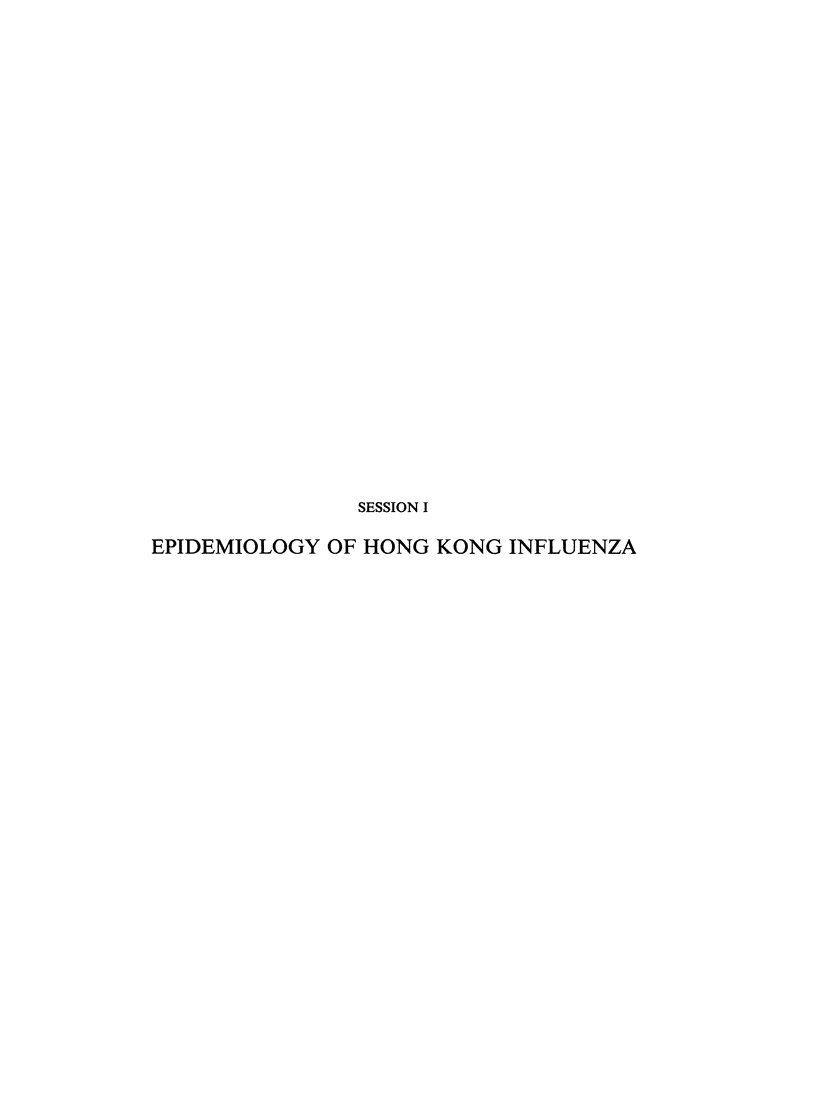
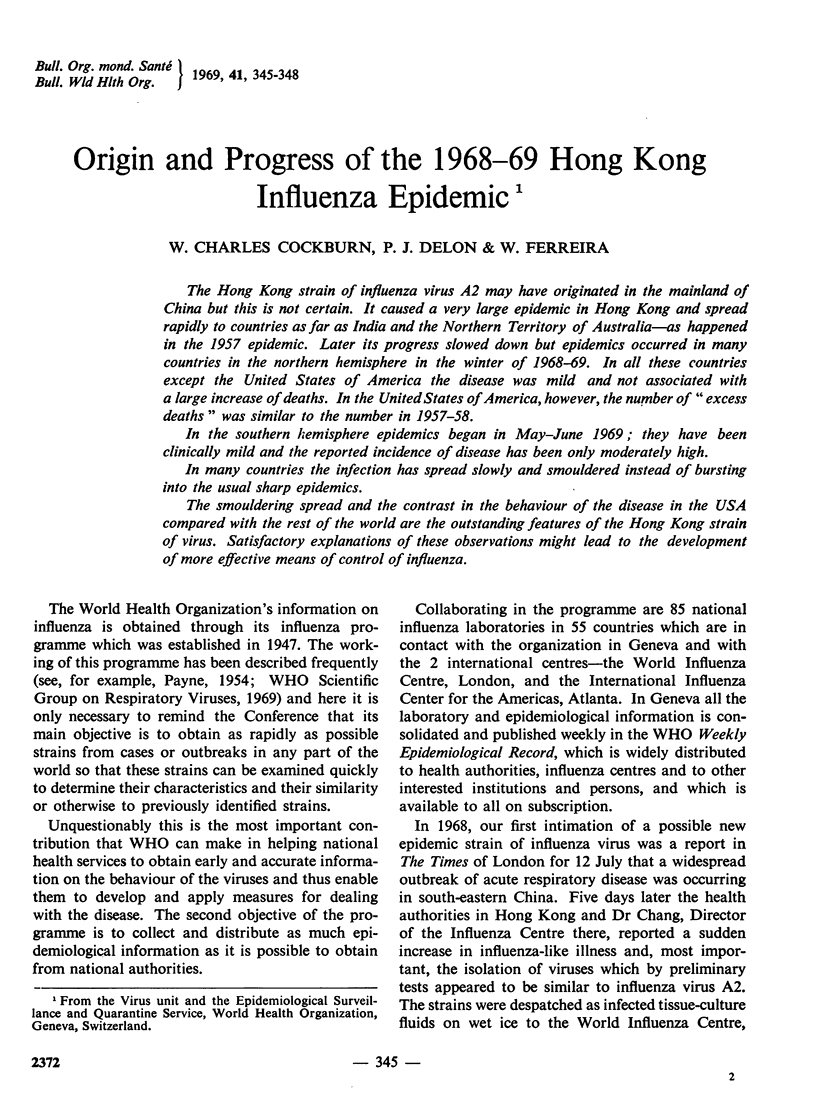
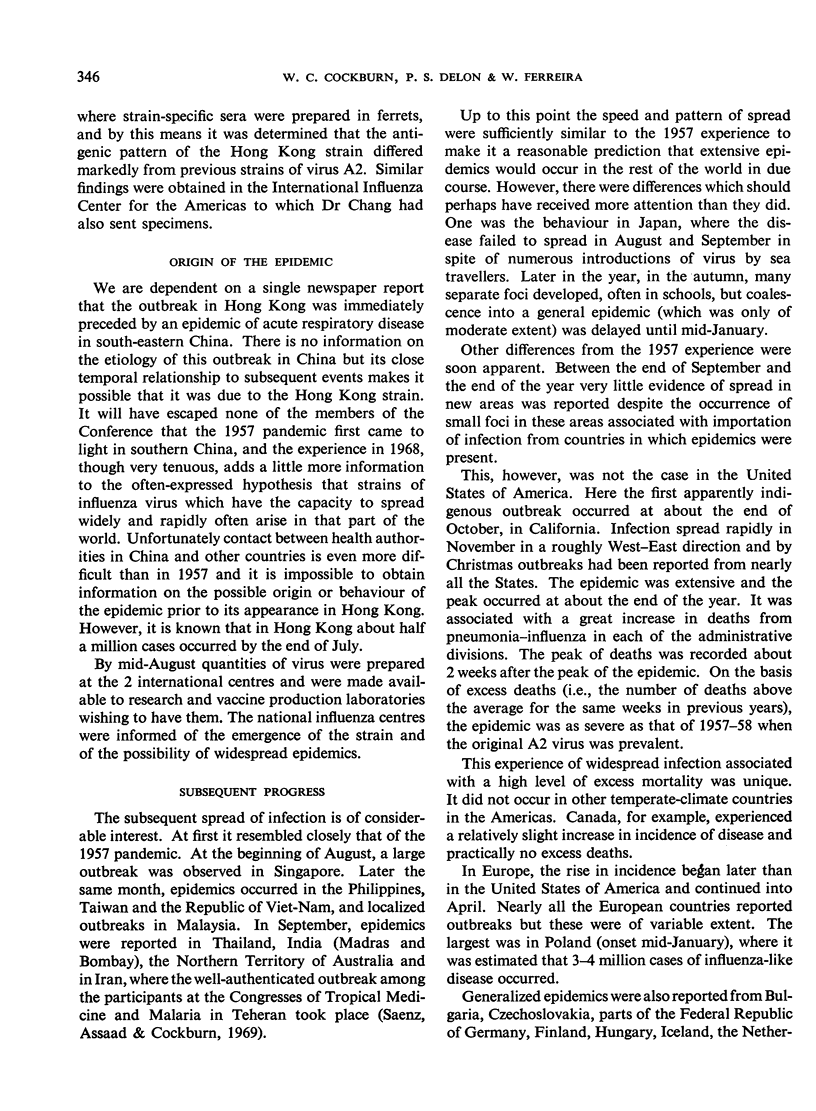
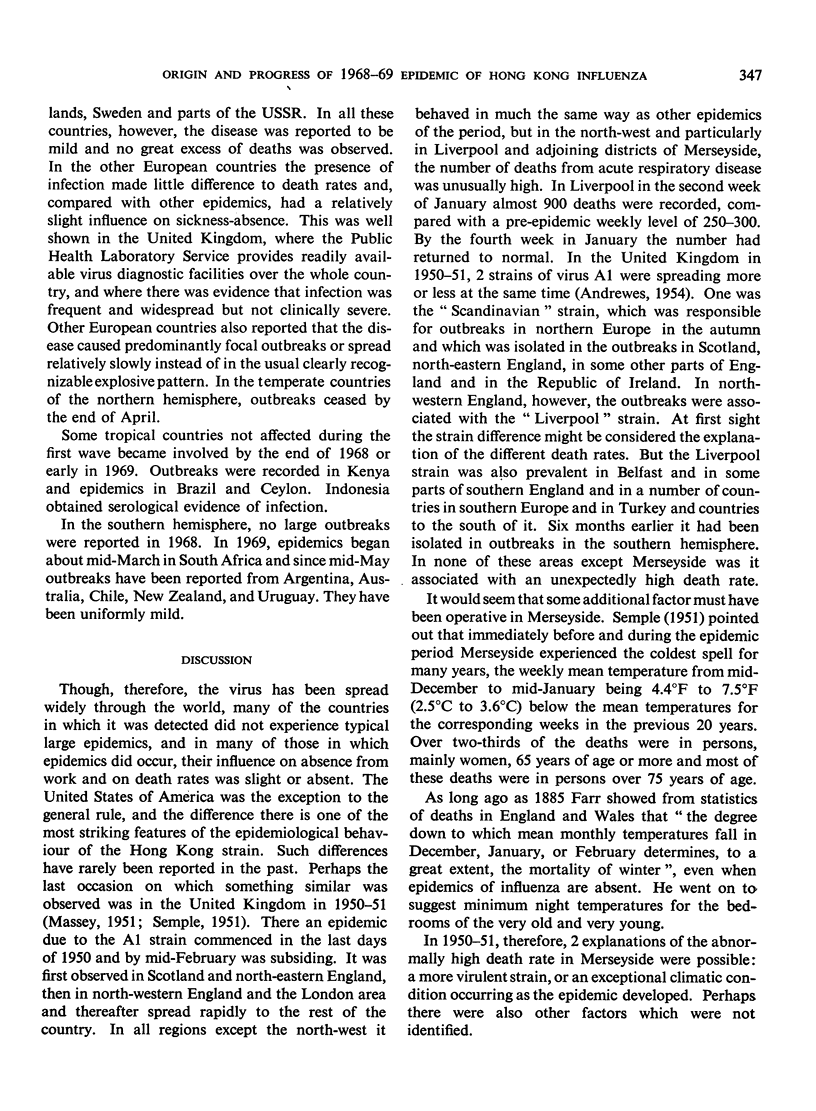
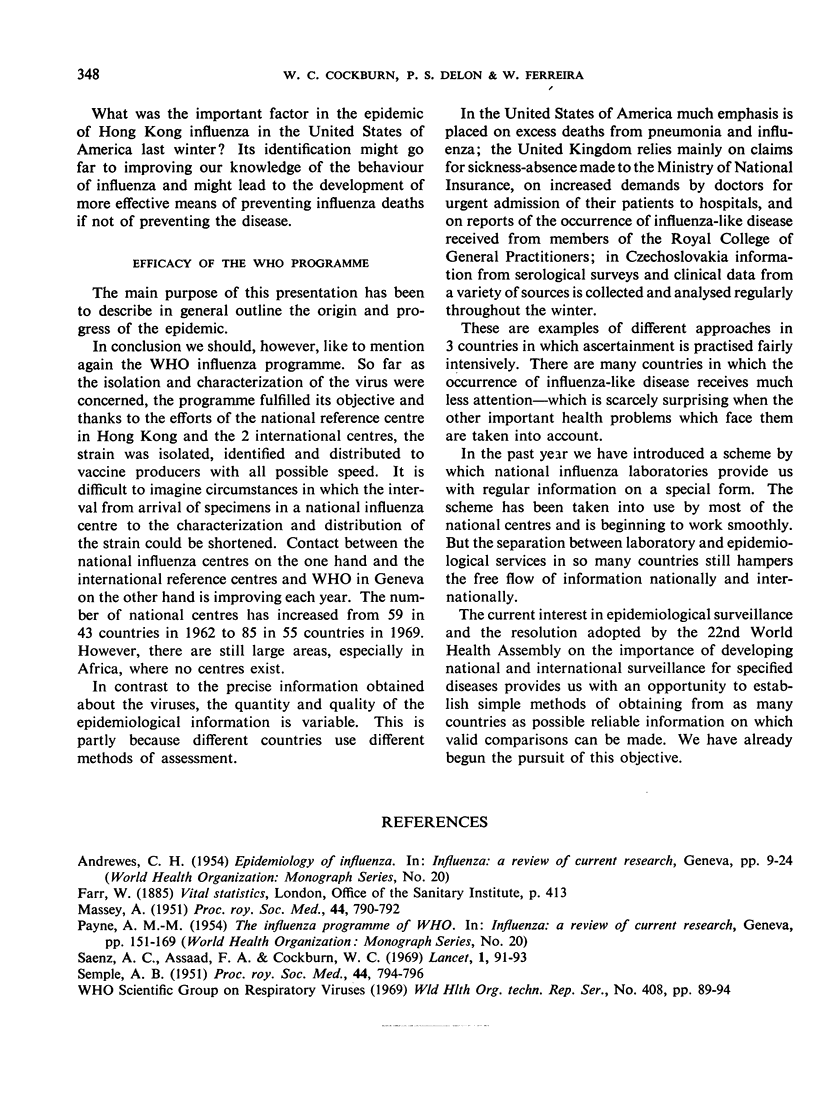
Selected References
These references are in PubMed. This may not be the complete list of references from this article.
- Saenz A. C., Assaad F. A., Cockburn W. C. Outbreak of A2-Hong Kong-68 influenza at an international medical conference. Lancet. 1969 Jan 11;1(7585):91–93. doi: 10.1016/s0140-6736(69)91104-0. [DOI] [PubMed] [Google Scholar]


